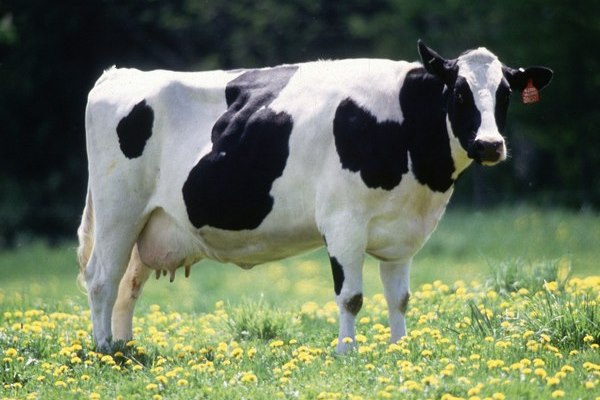
Holstein Friesians are a breed of dairy cattle originating from the Dutch provinces of North Holland and Friesland, and Schleswig-Holstein in Northern Germany. They are known as the world’s highest-production dairy animals.
Holstein-Friesian, breed of large dairy cattle originating in northern Holland and Friesland. Its chief characteristics are its large size and black and white spotted markings, sharply defined rather than blended. These cattle are believed to have been selected for dairy qualities for about 2,000 years. They have long been widely distributed over the more fertile lowlands of continental Europe, where they are valued highly for their milk-producing ability. In the United States the Holstein-Friesians outnumber all other dairy breeds and produce nine-tenths of the milk supply. The milk, however, has a relatively low butterfat content.
Production levels of this breed declined during the 1950’s when excessive emphasis was placed on correct colour pattern. During the 1970’s Holsteins were imported from the United States and used to improved the milk production. This resulted in larger animals with a more pronounced dairy characteristics. The mixing of these two breeds is such that now many Friesians are 25% to 75% Holstein.
The modern Friesian is pre-eminently a grazing animal, well able to sustain itself over many lactations, on both low lying and upland grassland, being developed by selective breeding over the last 100 years. Some outstanding examples of the breed have 12 to 15 lactations to their credit, emphasising their inherent natural fecundity. In response to demand, protein percentages have been raised across the breed and herd protein levels of 3.4% to 3.5% are not uncommon.
As the Friesian is mainly a dairy breed, surplus male animals are highly regarded, as they are producers of high quality lean meat, whether crossed with a beef breed or not. Beef cross heifers have long been sought after as the ideal suckler dam replacement.